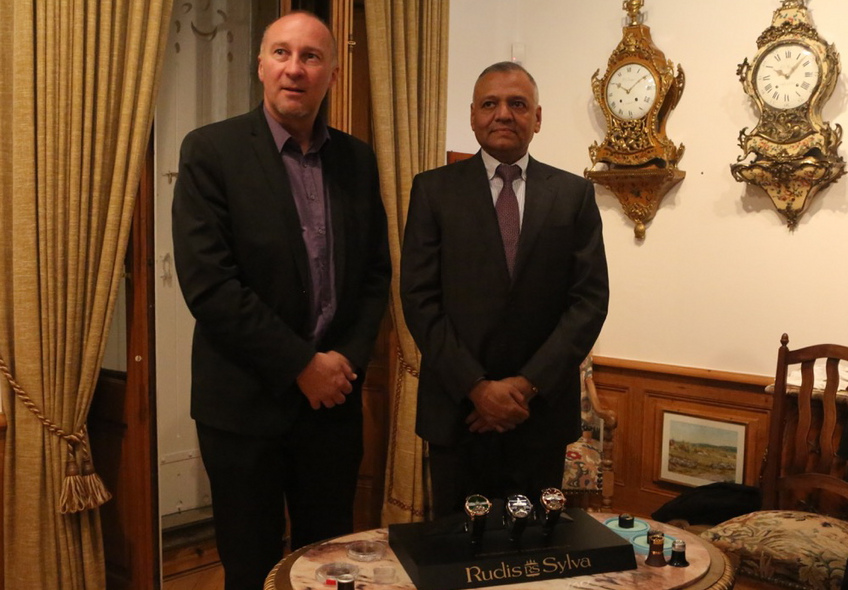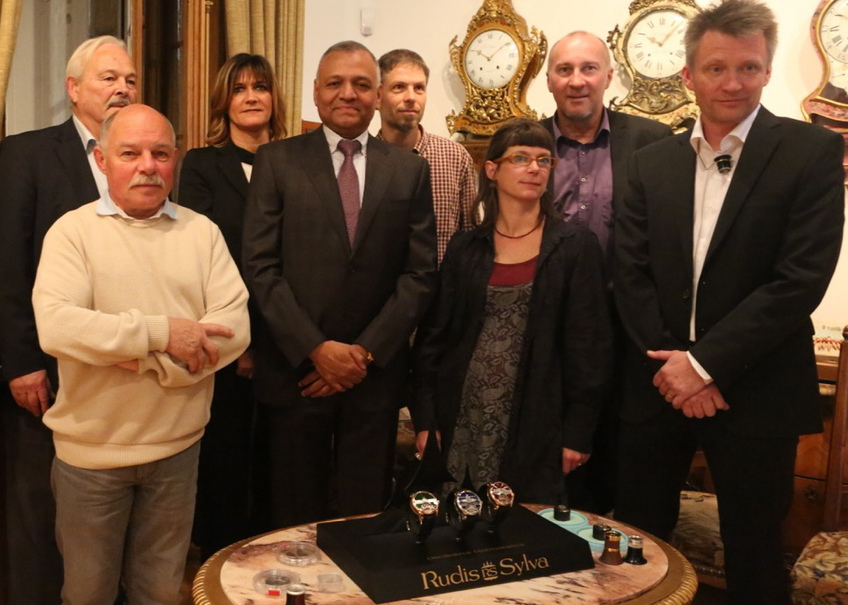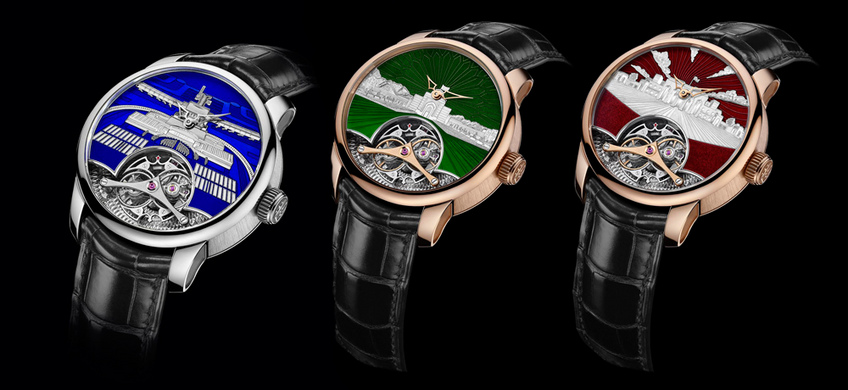

Rudis Sylva: three unique pieces and a tribute to craftsmen
Elegance is measured by actions and gestures and this is no secret to Rudis Sylva. The brand’s founder, Jacky Epitaux, has recently reiterated this by acknowledging the work of the craftsmen during the introduction of three unique timepieces set for Oman.
Ding, Ding, Ding… On this snow-filled day of November, the 18th-century clocks from this collection from Château des Monts chime the time without sounding out of place. Actually, the sound reminded Mohammed Zaman that he was, after all, in the historical cradle of watchmaking. Zaman, chairman of the eponymous Al Zaman Group, came all the way to le Locle to collect his prestigious order himself.

This is a first for the young brand founded in 2006 by Jacky Epitaux, former CEO of Rodolphe and, of course, the organization of the event was all but a coincidence. What’s more, Denis de la Reussille, the district president, said the fact that Rudis Sylva was associated to the ample collections of the museum in Le Locle was a direct reference of the enhancement of watchmaking crafts.

An 18-month project
As Epitaux enthusiastically claims, the brand’s objectives are to continue writing the history of watchmaking from the middle of the Neuchâtel Mountains and to reaffirm the added value that master watchmakers’ creativity brings to manual work. These defining objectives appealed to Zaman, who had already bought some of the brand’s timepieces in the past. He hence agreed to have three pieces made that focused on the iconic monuments of the Sultanate of Oman: Muscat’s Royal Opera House, the “Majlis” (the new Parliament and the symbol of democracy) and Muscat’s new 21-km2 airport, second in size after Dubai’s.
The enamel and hand-engraved dial revolved around quite an amount of central subjects. Epitaux didn’t hesitate to invite the craftsmen who made it possible to the presentation, where he acknowledged their work. Engine-turner Georges Brodbeck made the triangle-based pyramid décor which gradually decreases on the plate. Sylvain Bettex (Glypto) crafted the shiny hand engraving which is light years away from machine work. Furthermore, there was the work by enameller Sophie Cattin Morales and, last but not least, the work by the Arrigoni Laufer workshop for the 28 chamfered corners of the titanium bridge.
Value is in the time taken for execution
In a friendly gesture, famous expert in complications Philippe Dufour came to close the presentation on the added value of manual work. He furthermore underlined its increasing importance at a time when aficionados are taking a keener interest in Haute Horlogerie. Notwithstanding the harmonious oscillating mechanism that the watchmaking maison Mika Rissanen developed, Rudis Sylva put a lot of work into the project. The brand had to choose the materials, viewing angles, shapes, and structures for the dial and find a solution to the problem of grinding enamels and polishing with 4 coats. Finally, it worked on chasing the surfaces that had to be enamelled or the 10-mm hand engraving. “Issues which take up time and are quite costly but also confer the pieces value”, concluded Epitaux with the mischievous sound of the clocks in the background.





